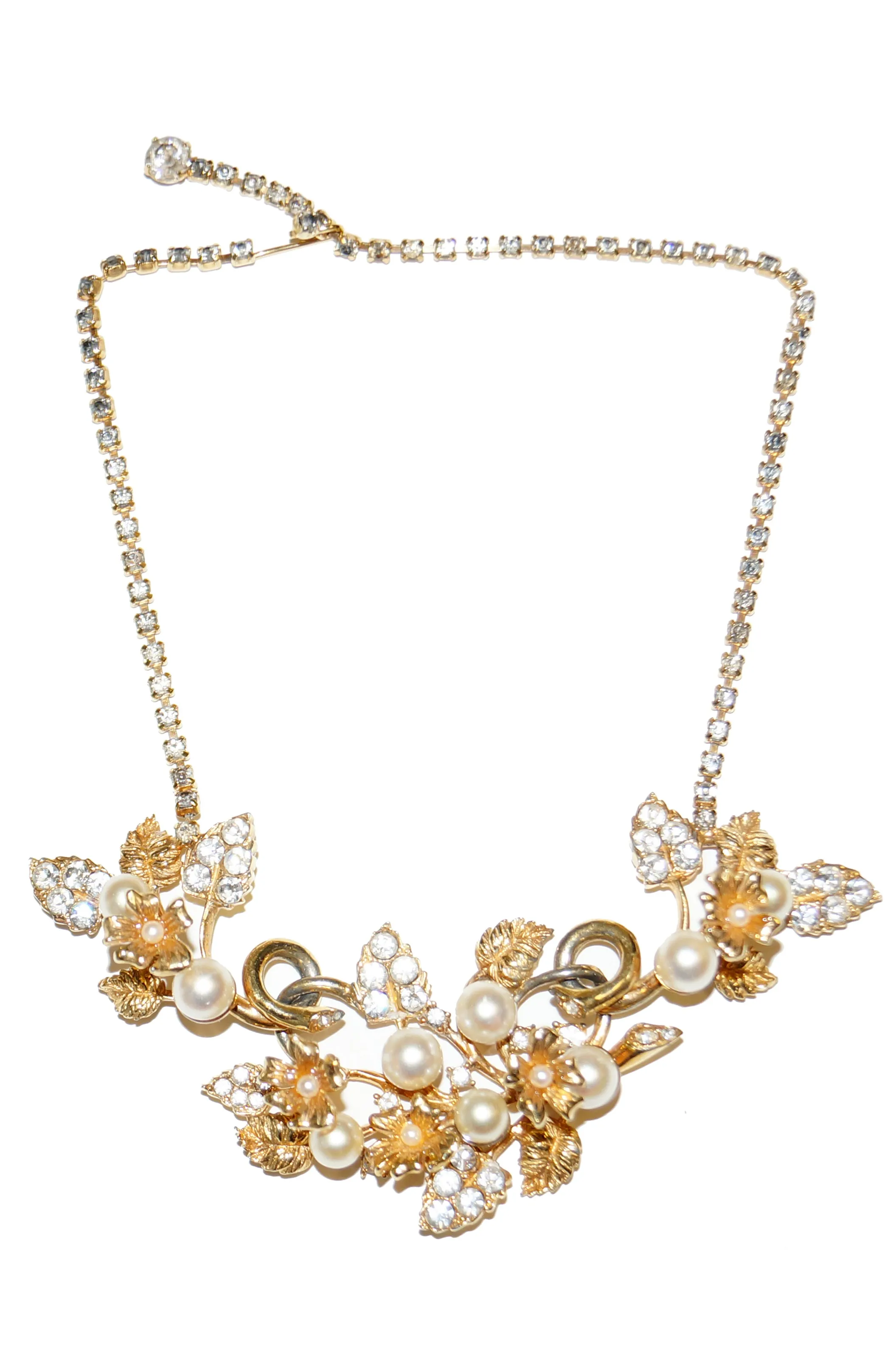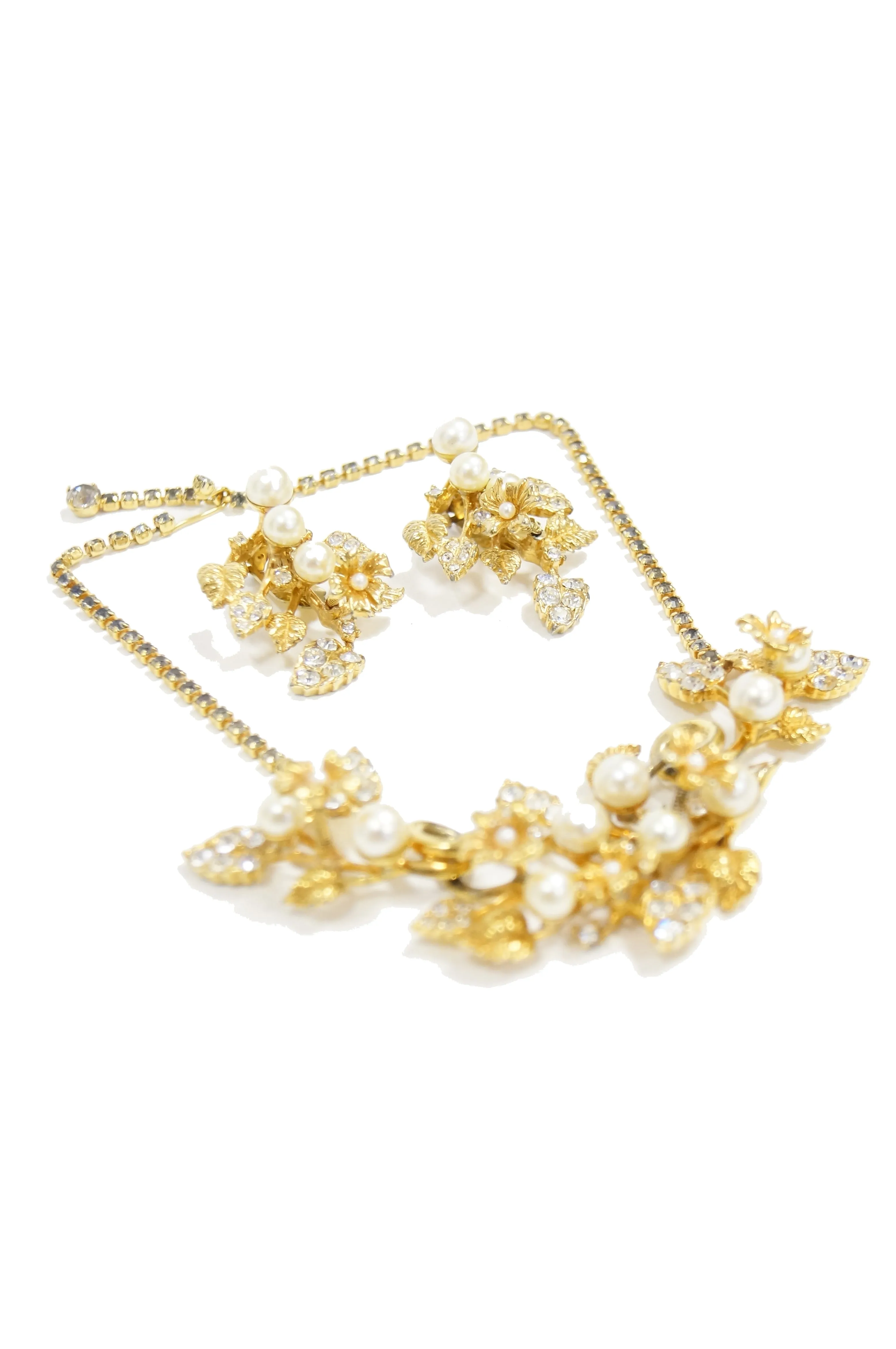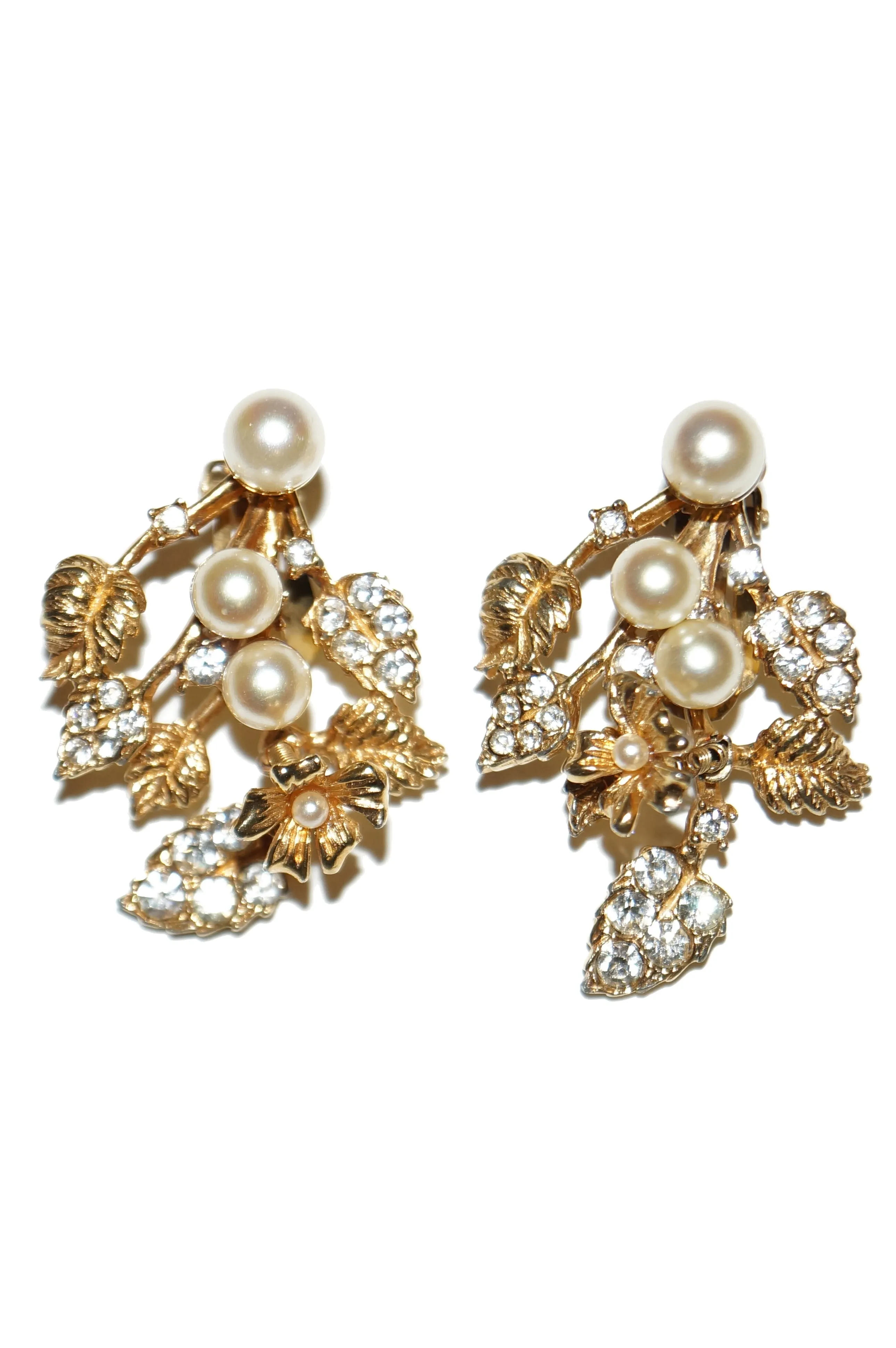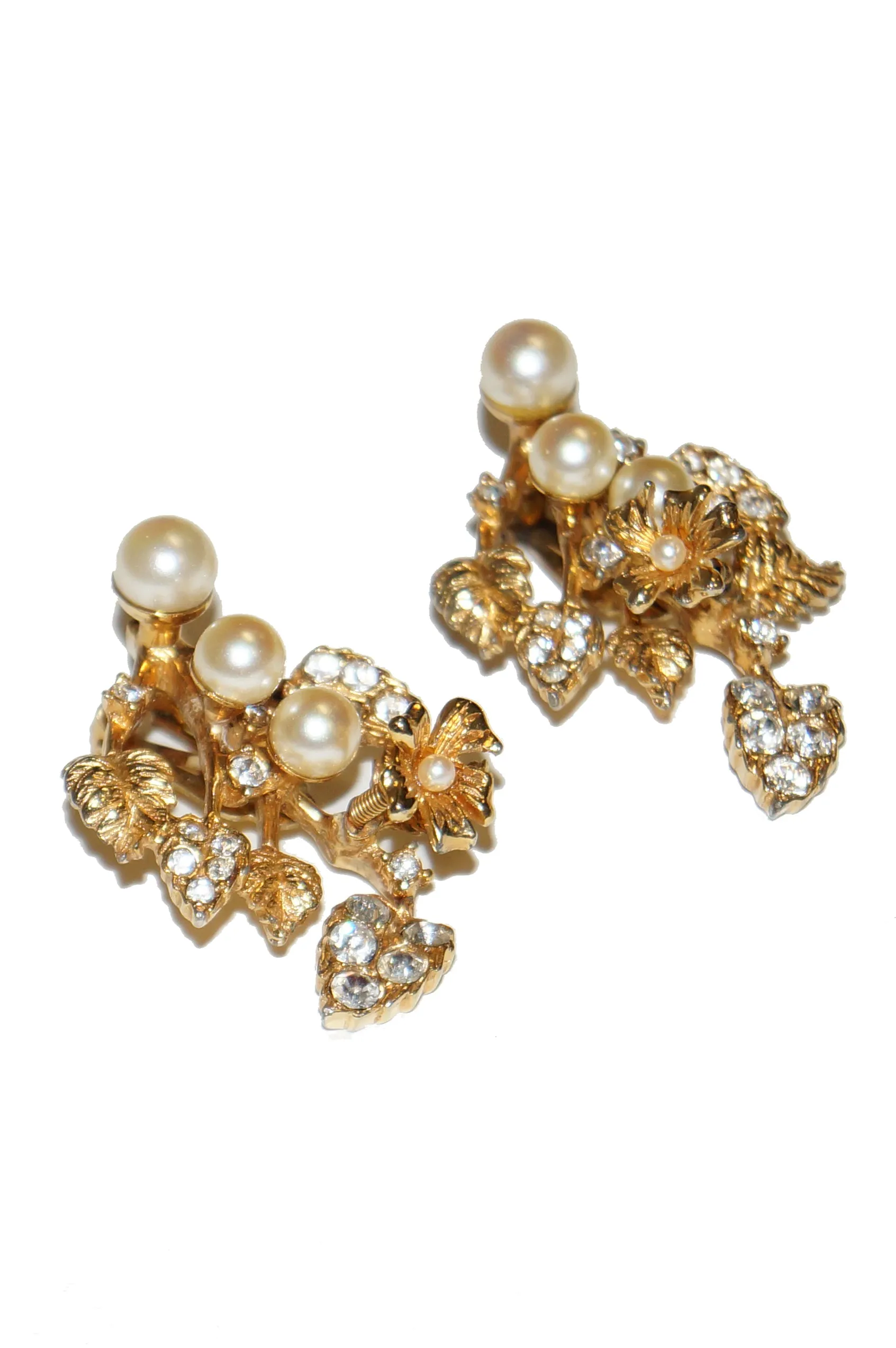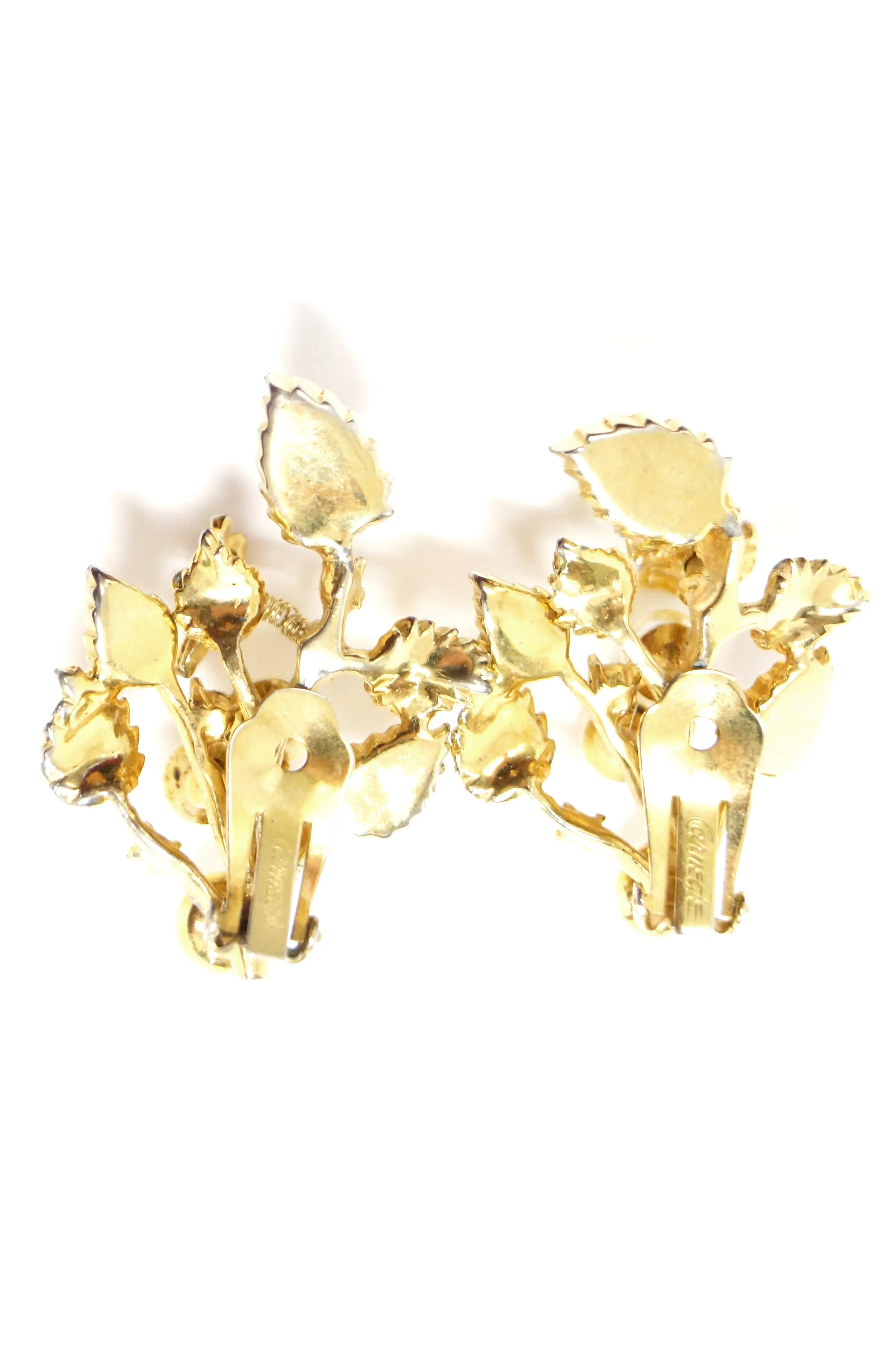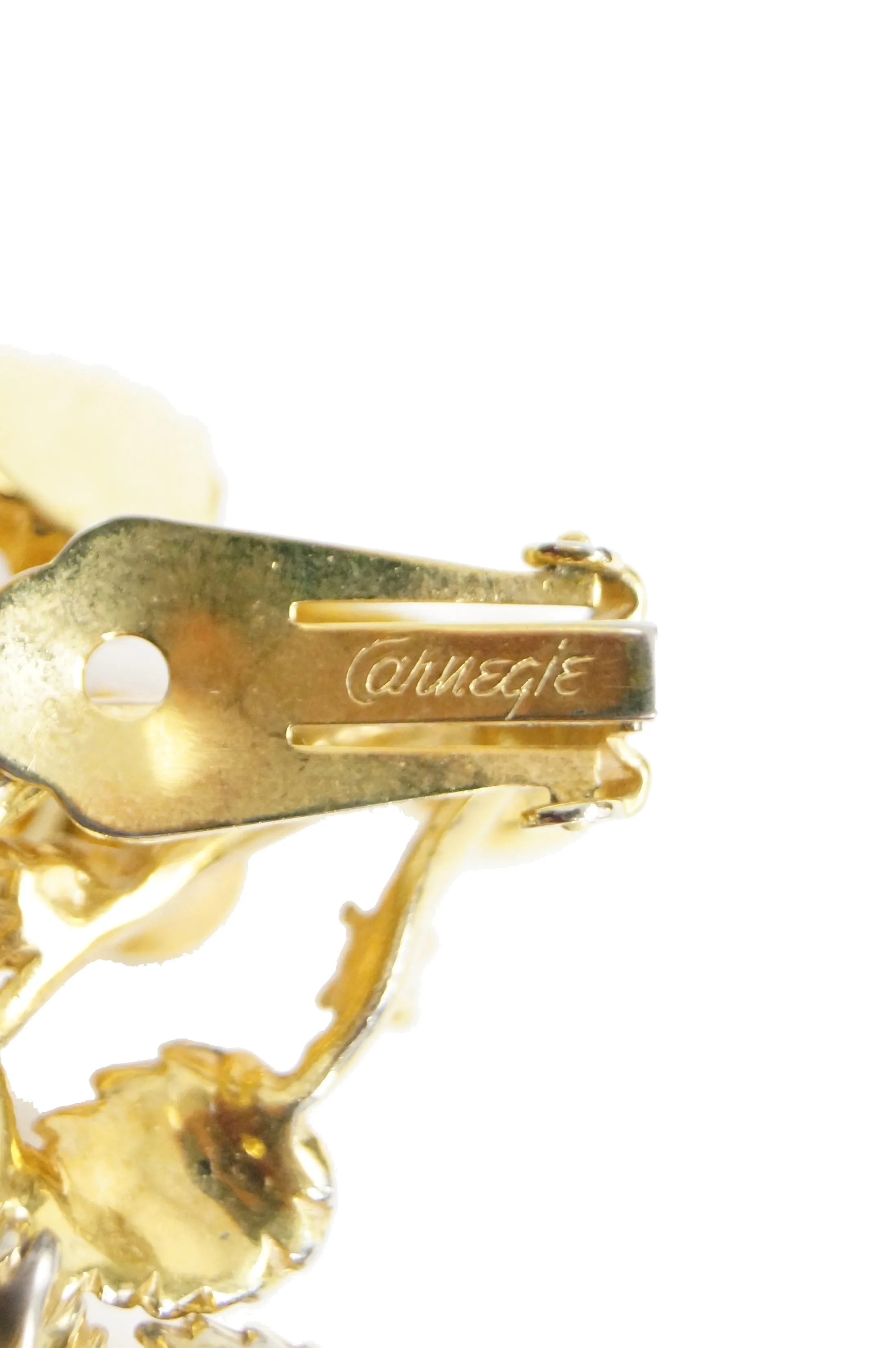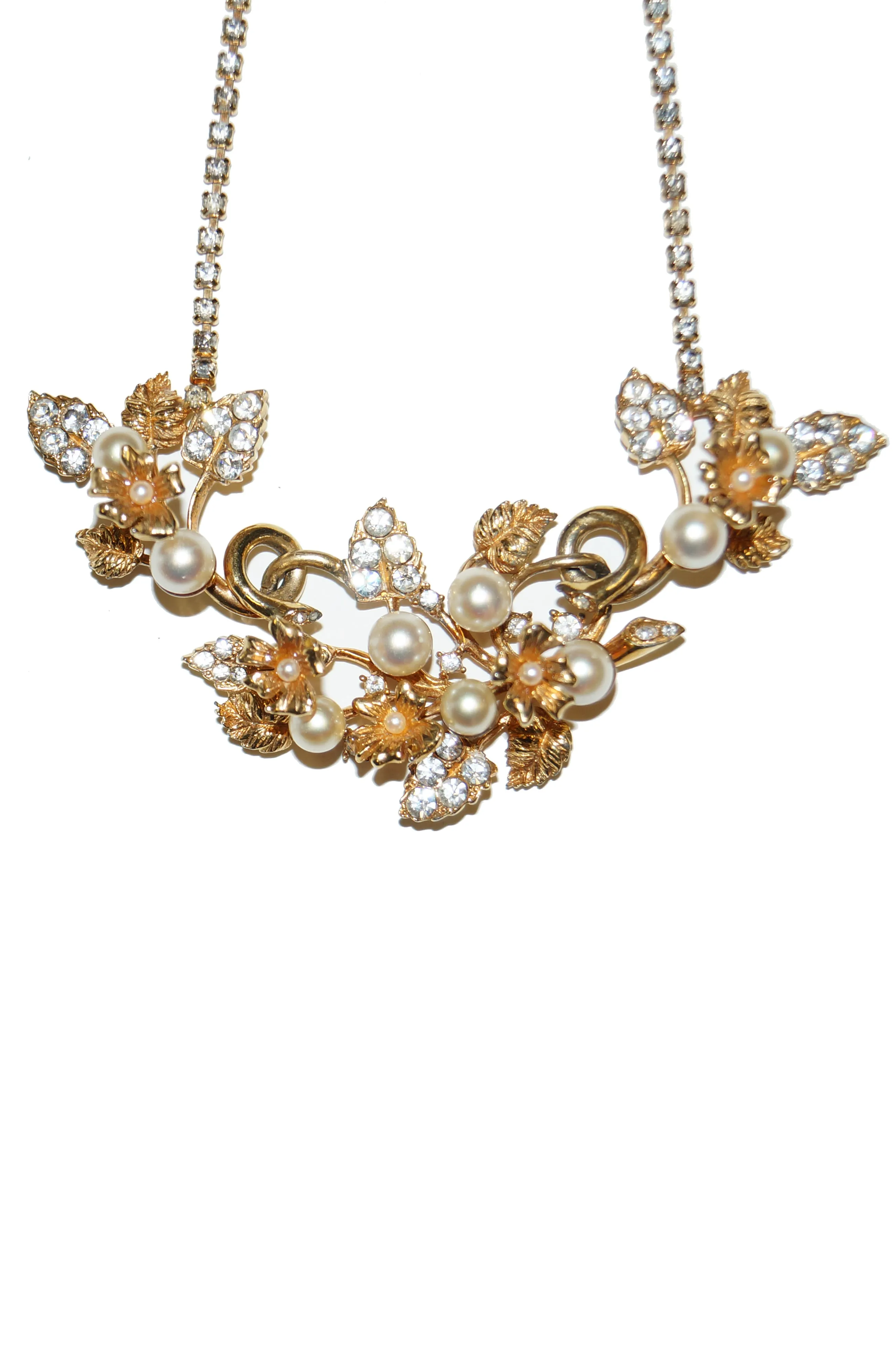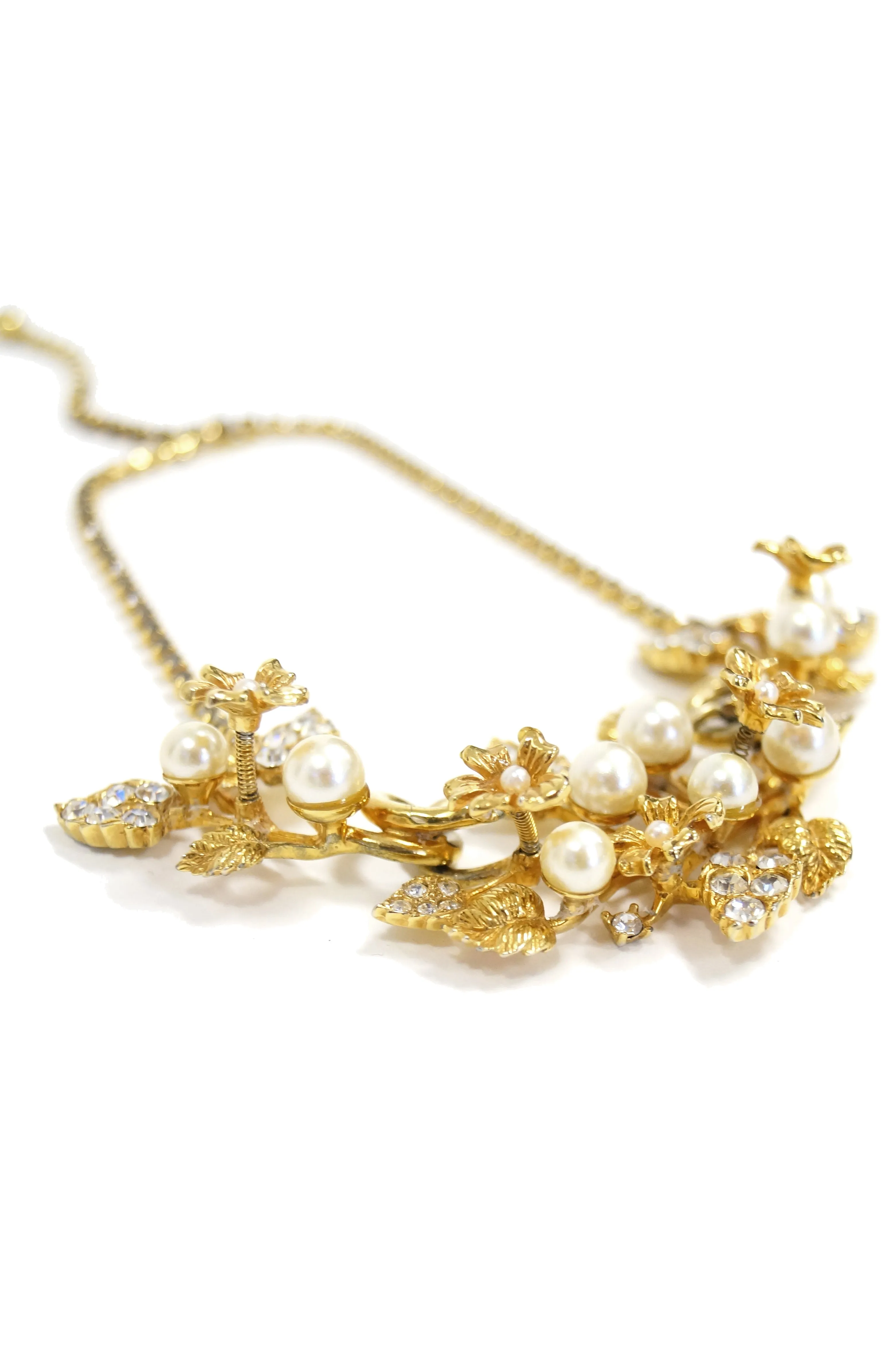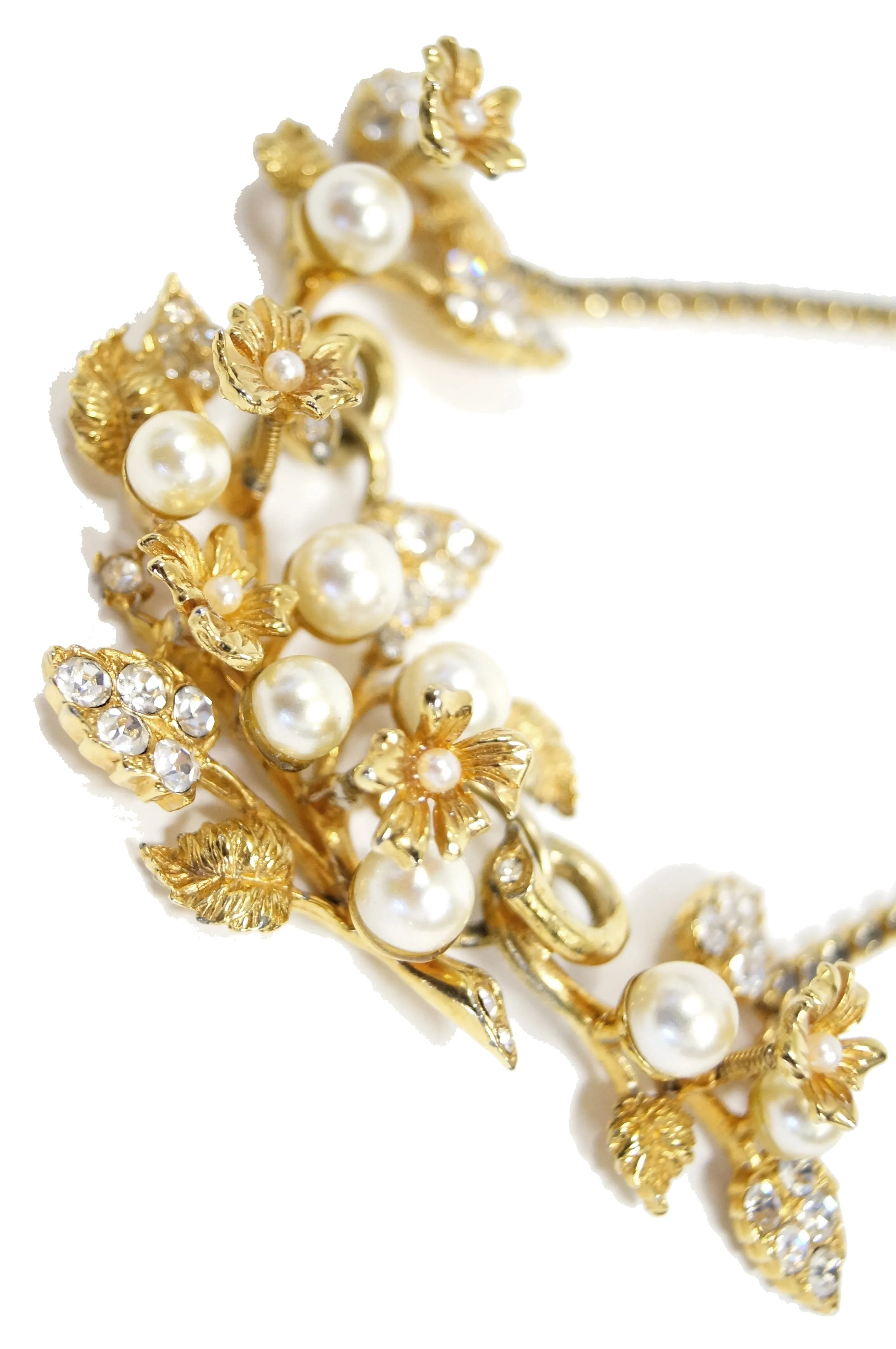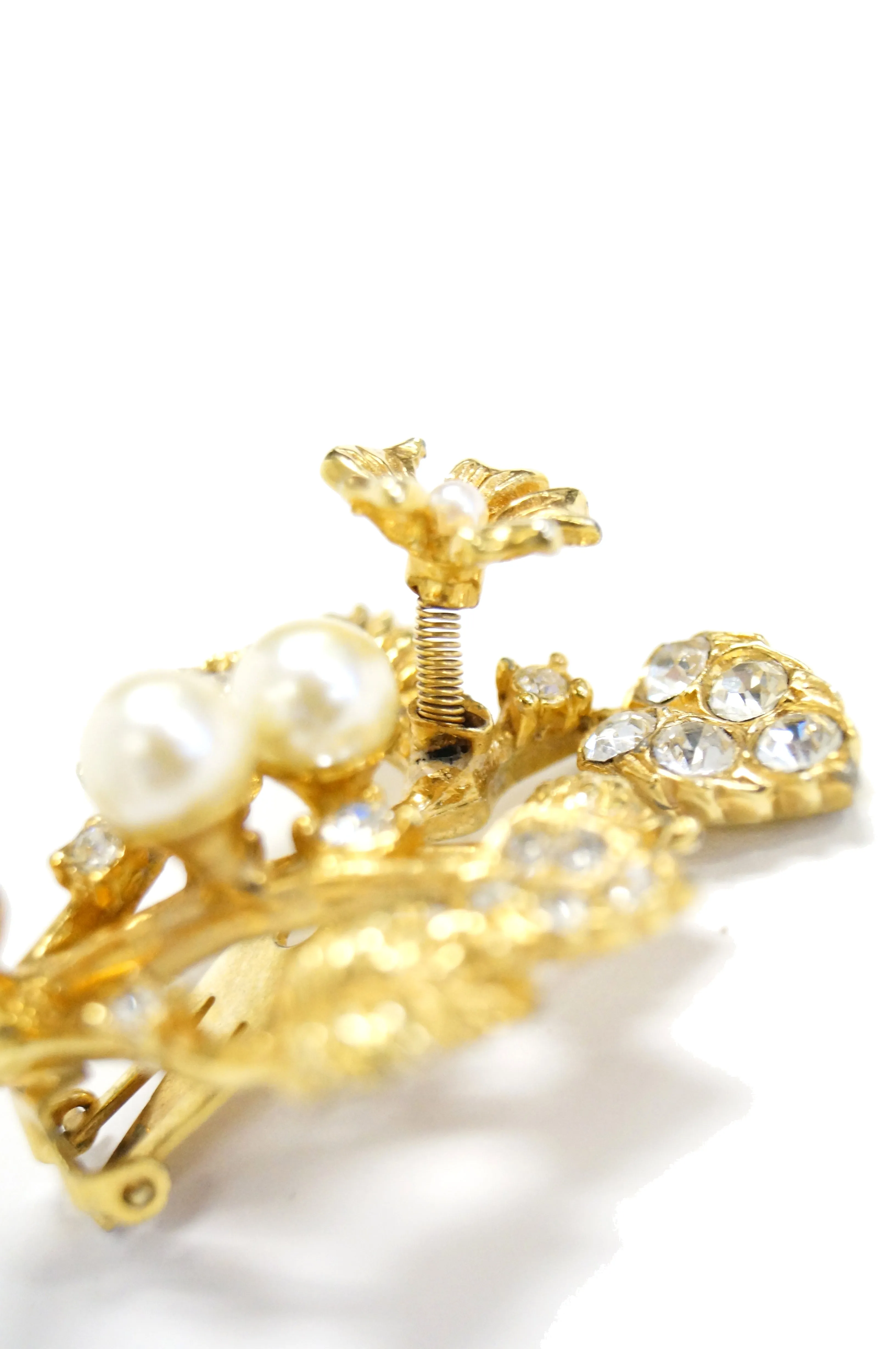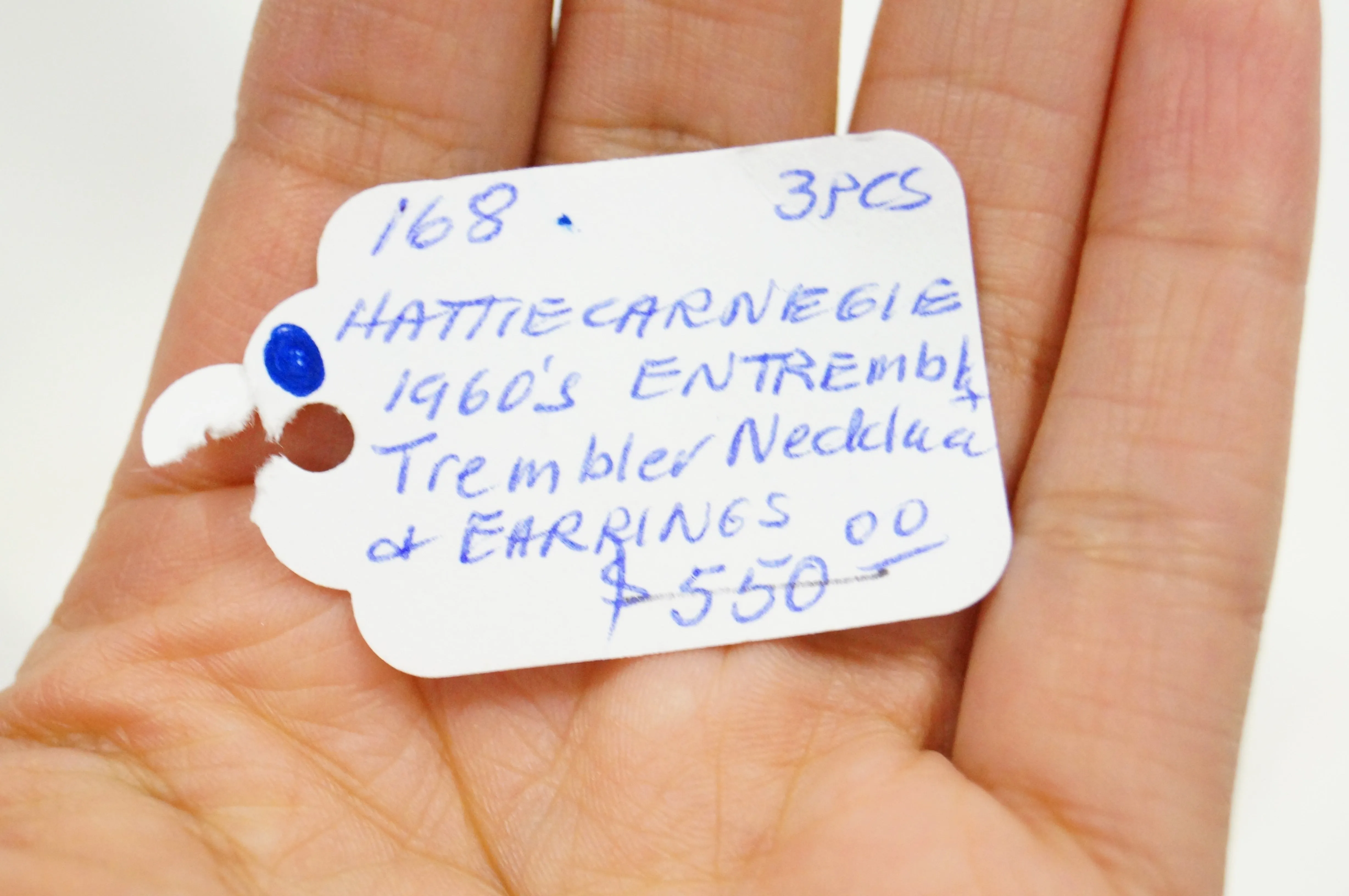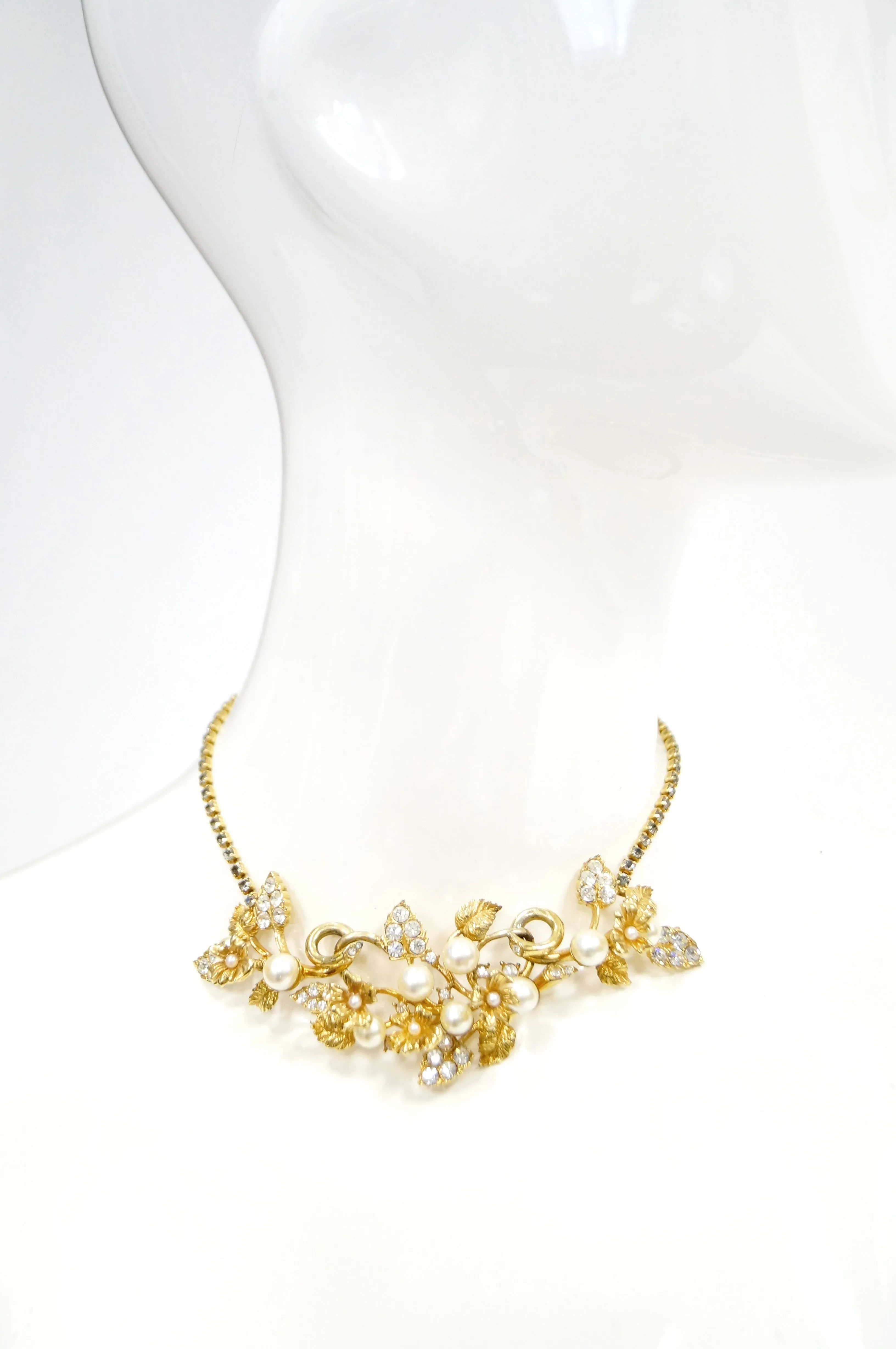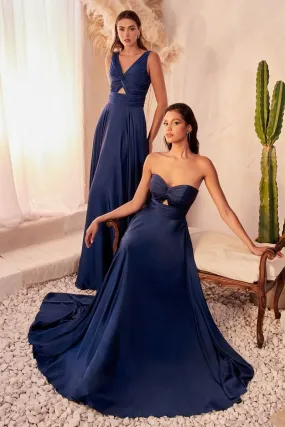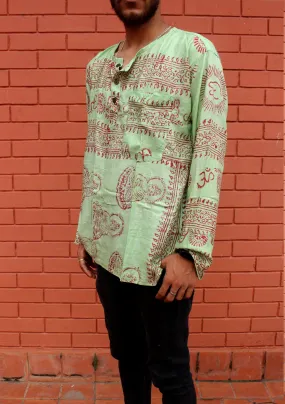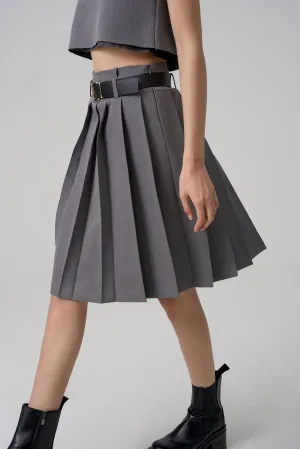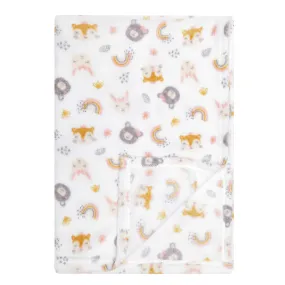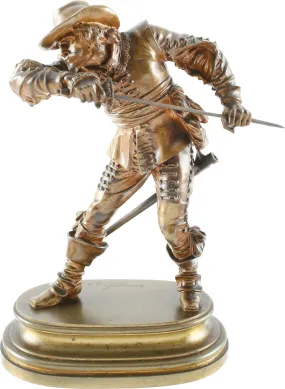This opulent gold tone pearl and rhinestone necklace is indicative of the luxurious jewelry Hattie Carnegie designed in the 1950s and 1960s. The necklace features a wide curved floral design composed of various rhinestone encrusted leaves with vines curling throughout, as well as bud - like pearls and small gold flowers set onto springs. The small golden flowers tremble when worn ( hence "entremble" ), giving the necklace an added layer of luxury and whimsy!
The necklace has a matching pair of earrings that feature the same rhinestone, pearl, and entremble floral design. They are available for purchase. See last image for details.
Hattie Carnegie was born Henrietta Kanengeiser in Vienna, Austria-Hungary. She was the second of seven children, and lived in poverty in her youth. The family immigrated to the United States when she was still a child, and settled in Manhattan. After her father’s death in 1902, Hattie took a job as a messenger at Macy’s to help support her family, and in 1904 she modeled and trimmed hats at a millinery.
In 1909 Hattie branched out, launching a hat making business with dressmaker Rose Roth, but by 1919 Roth had left the business, leaving Carnegie as the owner of “Hattie Carnegie, Inc,” a company that had a working capital of $100,000. Carnegie began traveling to Paris to buy original dresses to both sell in her shop, and use as inspiration for her own garment and accessory designs. Carnegie was instrumental in bringing Paris fashion to the United States; she imported Lanvin, Molyneux, Patou, Schiaparelli, Vionnet, and others, lavishing New York with gorgeous garments and groundbreaking designers that would have not crossed the pond otherwise. Carnegie also discovered and nurtured the talents of many prominent American designers, including Norman Norell, Pauline Trigère, and James Galanos. In 1925, Carnegie bought a building off of Park Avenue to house her $3.5-million-a-year business, and stayed there producing pieces throughout the Great Depression.
During World War II French haute couture came to a standstill. Carnegie rose to prominence on the international stage as an authority on fashion, and her works were seen in the theatre, cinema and on magazine covers. Although still glamorous, her designs became more austere when the United States joined the Allied Powers. As a part of the war effort, Carnegie designed a dress for Life Magazine. The dress patterns were published in the magazine alongside detailed instructions; it was said that although the dress could have been made for as little as $5, the original dress was valued at $175. After the war, Carnegie continued her business, the epitome of perseverance.
Sometime in her early 20s, Hattie had taken the last name Carnegie after Andrew Carnegie, the industrialist, philanthropist, and richest man in the United States during her lifetime. She certainly lived up to the name, having worked her way through and out of an impoverished childhood and into a glamorous life doing what she loved, while still grossing millions a year. Carnegie passed away in 1956, having been instrumental in the diffusion of Parisian fashion into American society, having nurtured the finest designing minds of the early and mid 20th century, and having designed all manner of enchanting things, including hats, handbags, gloves, jewelry, furs, lingerie, cosmetics, and even perfume.




